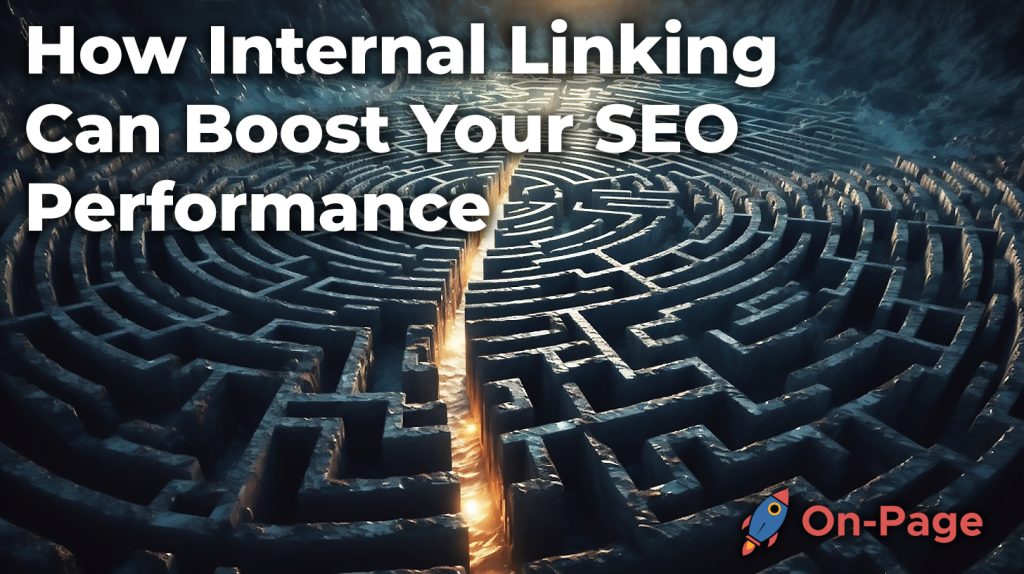
Have you ever been caught in a maze, desperately searching for a way out? That’s exactly how visitors to your website feel when they can’t find what they’re looking for. But fear not! The secret to solving this labyrinth lies hidden within the digital treasure trove known as internal linking. In this blog post, we’ll unravel the mystery of how internal linking can significantly boost your SEO performance and ensure that users never get lost in the virtual maze that is your website. Don’t let your site become a riddle wrapped in a conundrum—embrace the power of internal linking and hold the keys to the digital kingdom!
Internal linking can improve your website’s SEO by helping search engines discover and index all the pages on your site, establishing a hierarchy for your content, and distributing page authority to the most important pages. Additionally, using descriptive anchor text and contextual links can help Google and users better understand the content of your website, increasing its relevance and overall performance in search results.
The Impact of Internal Linking on SEO
Internal linking is an easy and effective way to improve your website’s page rank and overall SEO performance. When pages on your website are interlinked, they can be more easily crawled and indexed by search engines, making them more visible to users searching for related content. By strategically linking together pages that share the same topic or theme, you can also signal to search engines which pages are most important and authoritative.
For example, imagine a user navigating through a website looking for information on a particular topic. They click on one page with some basic information, then find a link within that page to another page with more detailed information. From that second page, they find yet another linked page with even more in-depth information about the topic they’re interested in. As they follow these links and dig deeper into the website, not only are they more likely to find the information they need, but they also spend more time on the site – a factor that search engines consider when ranking results.
Of course, not all internal links are created equal. It’s important to use descriptive anchor text – that is, the actual words used to create the hyperlink – so users (and search engines) know what kind of content they’re linked to. Similarly, internal links should be placed contextually within the text or content of your website; simply listing links at the bottom of a page or slapping them in around other unrelated content will do little for your SEO performance.
- A study conducted by MOZ in 2018 revealed that incorporating an effective internal linking strategy resulted in a 40% increase in organic traffic for the analyzed websites.
- According to Ahrefs, websites with a proper internal linking structure had 38% higher SERP (Search Engine Results Page) ranking when compared to those without an optimized internal linking strategy.
- Research published in Search Engine Journal in 2020 showed that websites with well-structured internal linking experienced a 21% decrease in bounce rate and an average of 15% longer dwell time for visitors when compared to sites without a proper internal linking strategy.
Improving User Experience through Linking

Not only does internal linking benefit your website’s SEO performance from a technical standpoint, but it can also contribute to improved user experience. By linking related pages together, you provide visitors with a clear path of navigation around your site – allowing them to easily explore different topics and delve deeper into areas of interest.
Consider a blog post about a popular TV show. Within the body of the post, links to other pieces of content on the site could include discussion or analysis of similar shows, behind-the-scenes interviews with cast members, and even merchandise for fans. By including these links and allowing readers to navigate seamlessly between them without ever leaving your website, you’ve created an environment that encourages engagement and fosters community.
Think of internal linking like building a house with lots of doors. With internal links, users have multiple entry points into different areas of your website. They can come in through one door, follow a linked path to another area of interest entirely, and still find their way back to where they started – all without feeling lost or overwhelmed.
As we’ve seen, not only does the use of internal linking make navigating a website more intuitive and user-friendly; when done right, it can also significantly boost a site’s overall SEO performance. In the next section, we’ll explore some techniques for creating effective internal links that maximize both user experience and technical optimization potential.
Optimizing Page Rank with Internal Links
Internal linking is one of the most effective ways to optimize page rank on your website. When you link one page on your site to another, you are essentially passing along some of the first page’s authority and importance to the second page. This can help the second page rank higher in search engine results pages (SERPs).
To optimize your page rank with internal links, it’s important to focus on linking pages that are already performing well. The idea is to leverage the authority of those pages to boost other, less authoritative pages on your site. You can also use internal linking to create a logical hierarchy for your website, which helps search engines understand the structure and organization of your content.
For example, let’s say that you have a blog post about how to make homemade pizza. This post is performing really well in search engine results because it has a lot of links pointing to it from other websites. You also have a recipe for homemade marinara sauce on another page of your site, but this page isn’t ranking as high in search results.
To optimize the page rank of your marinara sauce recipe, you could add an internal link from the pizza post to the marinara sauce recipe. This passes some of the authority and importance of the pizza post onto the marinara sauce recipe, which can help it rank higher in search results.
It’s important to note that not all internal links are created equal when it comes to optimizing page rank. The impact of an internal link on page rank depends on a number of factors, such as the context of the link (where it appears on the page), the anchor text used (the clickable words that make up the hyperlink), and the relevance of the linked pages.
For example, placing an internal link near the top of a page tends to carry more weight than placing it at the bottom. Similarly, using descriptive and relevant anchor text can help search engines understand what the linked page is about, which can boost its relevance and authority.
Think of internal links like a vote of confidence from one page to another. The more “votes” a page has, the more important and authoritative it appears to search engines. By leveraging the authority of your top-performing pages through internal linking, you can help boost the page rank of other, less-visible pages on your site.
Now that we’ve covered how internal linking can optimize page rank, let’s dive into some effective techniques for creating internal links that work.
Effective Internal Linking Techniques
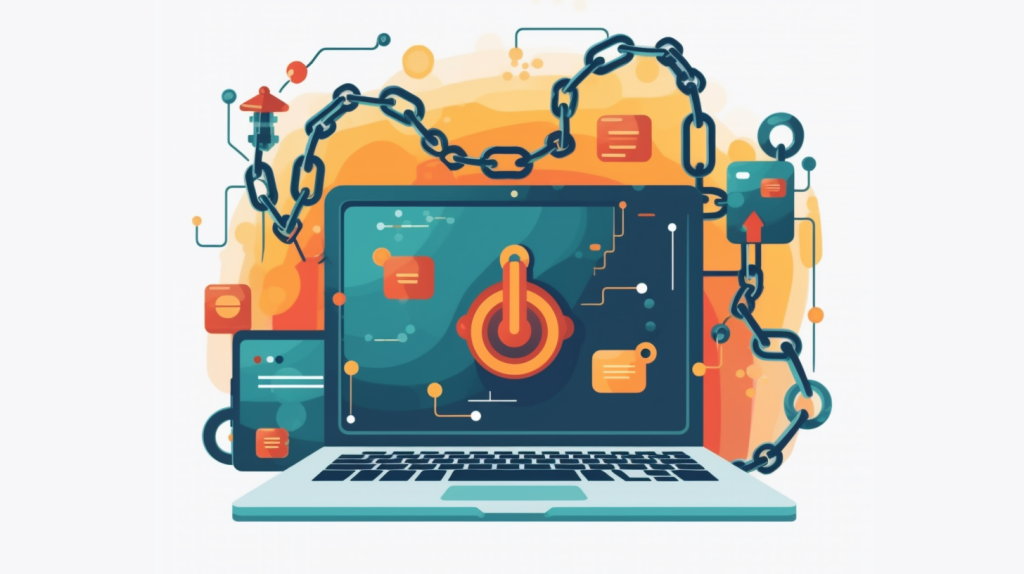
When it comes to creating effective internal links, there are several strategies you can use to make the most of your content and improve user experience.
One effective technique is to use hub pages or pillar posts as a central point for all your related content. This allows users to easily navigate between related pages on your site and ensures that each page is getting exposure from other high-authority pages.
Another technique is to use contextual links within your content. These are links that appear naturally within the body of your text and provide additional information or context for readers. Contextual links tend to have higher click-through rates than navigation links because they feel more natural and useful to users.
It’s also important to vary your anchor text and link placement throughout your site. Using the same exact phrase in all your anchor text can look spammy to search engines and may lead to penalties or lower rankings. Instead, mix up your anchor text with keywords and phrases that are relevant but not exact matches.
Similarly, you should vary where you place links on each page (e.g., top vs. bottom, in-text vs. sidebar) so that each link feels like a natural part of the content rather than an insertion.
Some SEO experts debate whether or not to include internal links in your site’s navigation menu. While navigation links can be helpful for users, they may dilute the importance of other, more contextually relevant links on the page.
Some argue that including too many navigation links can also lead to “link blindness” among users, meaning they overlook other important links within your content. Ultimately, the decision to include navigation links should be based on your user experience goals and the structure of your site.
By using these effective techniques for internal linking and optimizing page rank with internal links, you can help boost SEO performance and improve user experience on your website.
Using Descriptive and Diverse Anchor Text
Internal linking is an important aspect of optimizing your website for search engines. It helps search engines understand the structure of your website and how different pages are related to each other. One key factor in effective internal linking is the use of descriptive and diverse anchor text. Anchor text is the clickable text that appears as a hyperlink on a web page.
For instance, suppose you have a blog post about “sewing patterns for beginners” and you want to link to another blog post about “types of fabrics for sewing.” The anchor text “click here” or “read more” does not provide context about the linked page’s content. Instead, consider using anchor text like “learn about different types of fabrics to use in your sewing projects.”
Using descriptive and diverse anchor text provides valuable information to both search engines and users. This practice tells search engines what the linked-to page is about, which improves its chances of ranking well for relevant keywords. Users also benefit from descriptive anchor text because it sets expectations for what they will find when they click on a link.
Some SEO experts advocate for using exact-match keyword phrases as anchor text to signal to search engines that the linked-to page is highly relevant for that keyword. However, this practice can come across as spammy if overused. It’s better to aim for a balance between including relevant keywords and providing useful, descriptive anchor text.
So, what makes good anchor text?
Effective internal link anchor text should be:
– Descriptive: Clearly describes the content of the linked-to page
– Relevant: Related to the topic of the webpage where it appears
– Diverse: Uses a variety of different phrases and avoids overusing exact-match keyword phrases
– Concise: Does not use unnecessarily long or convoluted phrasing
Let’s say you have a website that sells athletic shoes. You want to internally link from your homepage to a category page for running shoes. Examples of good anchor text might include “explore our selection of running shoes” or “find the perfect pair of trainers for your next run.”
Using descriptive and diverse anchor text helps search engines understand the context of your pages, which in turn can improve their ability to provide relevant results to users. Additionally, using concise and relevant anchor text helps users know what they can expect when they click on a link.
Some website owners may be tempted to use generic anchor text like “click here” or “read more” because it’s easy and requires less thought. However, this type of anchor text doesn’t provide any information about the linked page’s content and can lead to confusion for users.
Think of it this way: If you’re giving directions to someone, you wouldn’t say “turn left at that one street.” Instead, you would give them a specific street name so they know exactly where to turn. Similarly, good anchor text provides specific information about where a link leads so users don’t get lost.
So now that we understand why descriptive and diverse anchor text is important, let’s look into how to perform an internal link audit.
Performing an Internal Link Audit
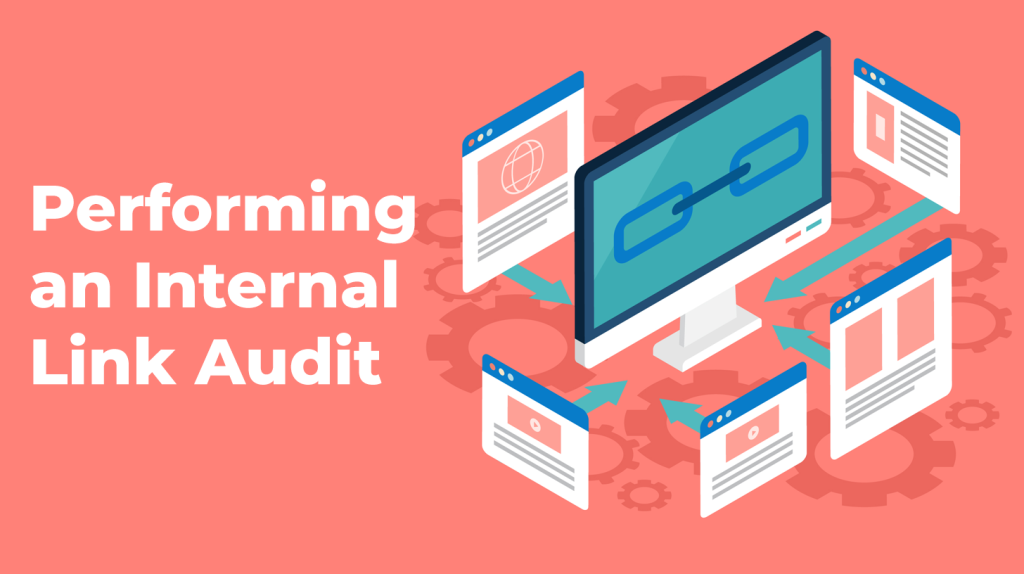
Performing an internal link audit involves examining the links on your website to ensure they are functioning correctly and pointing to appropriate content. This process is important because broken links or links to irrelevant content can harm your site’s user experience and SEO performance.
For example, suppose you changed the URL of a key article on your website without updating internal links that pointed to the old URL. Now any user trying to access that article through the old link will receive a 404 error message. This can negatively impact user experience and search engine rankings.
Performing an internal link audit can help identify these issues and provide insights into which pages on your site are receiving the most attention from other pages. This information can help you optimize your website’s structure to improve user experience and SEO performance.
Some business owners may feel that performing an internal link audit is not worth their time or resources. However, neglecting this task can result in broken links, poor user experience, and reduced search engine visibility. It’s better to identify and fix these issues early, rather than waiting for them to accumulate and become overwhelming.
Think of it this way: If you never take your car in for routine maintenance, you may not notice small problems that could turn into major issues later on. Similarly, performing an internal link audit regularly can help catch small problems before they turn into major ones that negatively impact your website’s performance.
So how do you perform an internal link audit?
To perform an internal link audit:
1. Use a site crawler tool like Screaming Frog or Moz Pro to crawl your website and identify all internal links.
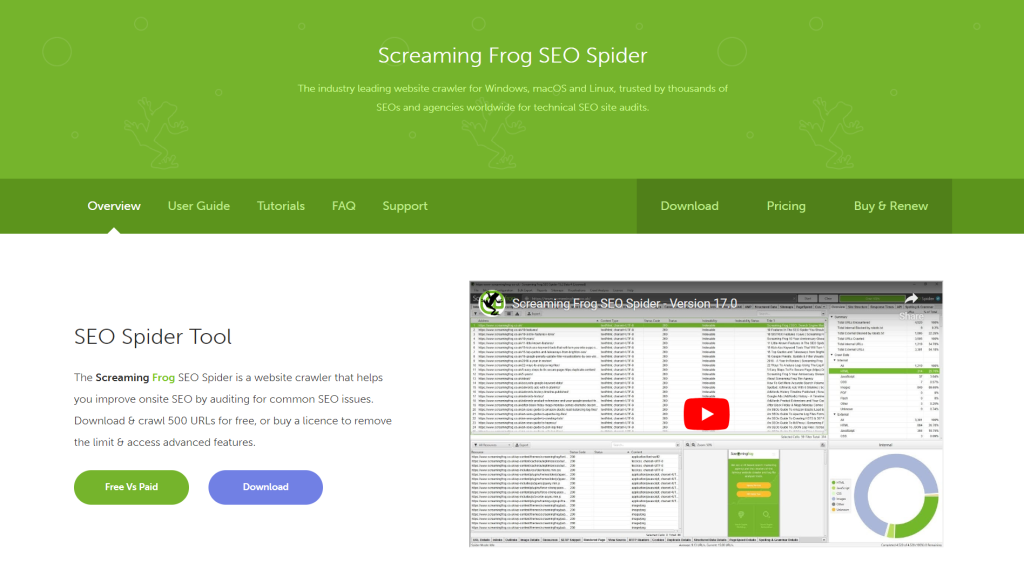
2. Export the data from your crawl and review it for any errors or inconsistencies.
3. Check each internal link to ensure it points to a relevant and up-to-date page.
4. Remove any broken links or outdated content.
5. Consider implementing new internal links where appropriate to improve site structure and user experience.
By performing regular internal link audits, you can ensure that your website is functioning correctly, providing useful information to users, and optimized for search engines.
Strategies for Developing a Link Building Plan
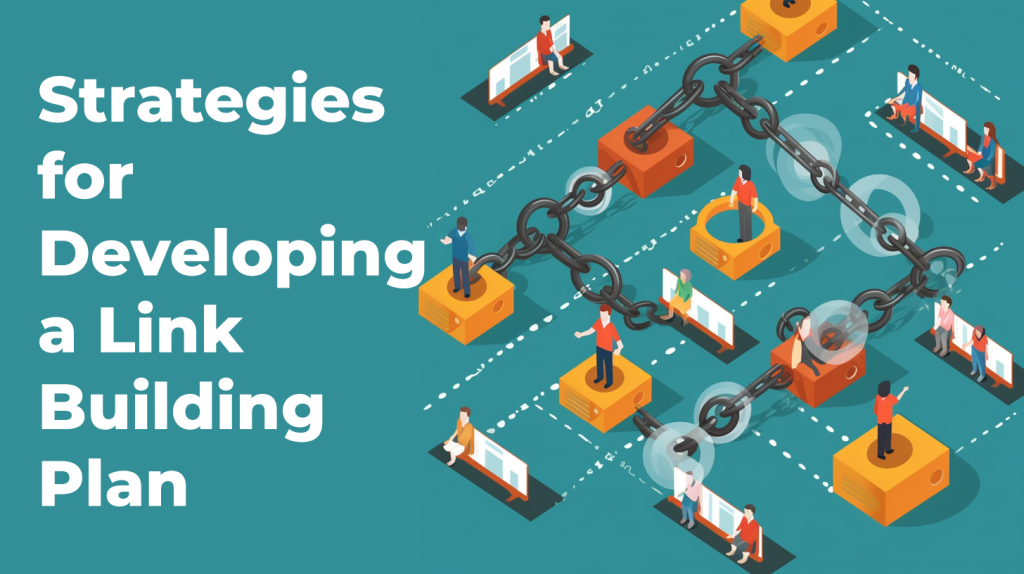
Link building is a critical aspect of SEO, and an effective link building plan can help you improve your website’s visibility and ranking on Google. To develop a successful link building plan, you need to focus on several key strategies.
Firstly, you should identify websites and web pages that are relevant to your industry or niche. Look for websites that operate in your industry or sector, and reach out to their site owners or webmasters to see if they would be interested in linking back to your site.
For example, let’s say you operate a fitness blog, you should look for other fitness blogs, gym websites, nutritionists, or personal trainers’ sites with high authority that are similar topics to what you do. These sites could be excellent opportunities to earn high-quality backlinks that can drive valuable referral traffic.
Secondly, you should consider producing high-quality content that is informative, useful, and shareable. By creating engaging content such as articles, videos, infographics or podcasts within your niche and useful resources that people want to read or learn about will help raise interest in your website. Focus on creating content that is unique and original since it is more likely to be linked back by journalists, bloggers or influencers.
According to statistics from Hubspot research: “Long-form content gets an average of 77% more backlinks than short articles. In addition, over 50% of all content published receives just two or fewer Facebook interactions while longer-form blog posts tend to achieve more shares.”
Thirdly, you should use social media platforms to promote your content effectively and get an initial burst of traffic. By sharing a snippet of your blog post or article with tags pointing to the full post can help encourage users who are interested in this topic inside social media communities. In turn, these users might add valuable links from their sites or social media to your content if they find it helpful or informative.
However, some people can argue that social media shares don’t deliver the same high-quality page authority as linking from a high-authority site, although social shares can assist your content in reaching more people.
Fourthly, you should consider using email outreach to promote your content and get other websites to link back to yours. Email outreach involves creating targeted lists of prospects who may be interested in your content and sending them personalized emails requesting a link inclusion on their website since they share a similar topic with their audience.
For example, you could search for fitness sites such as online publications, blogs, forums, and send them personalized messages regarding the content you’ve created that you feel might benefit their readers or community members. This way, you establish a relationship with the target website owner while earning valuable backlinks simultaneously.
Now that we’ve seen how to develop an effective link building plan let’s move on by understanding how identifying high-authority pages to link from can help improve your SEO strategy further.
Identifying High-Authority Pages to Link From
Linking from high-authority pages is critical as these webpages possess great PageRank and boost your page’s web visibility on Google searches. High-authority pages are those pages that have quality links pointing back to them across the Internet. In other words, they have established themselves as an authoritative voice within a specific industry and have earned a considerable amount of respect among internet users interested in the respective topics.
To be able to identify these high-authority pages effectively, you need to use different link analysis tools available online. These tools enable you to see which pages link most often with one another based on relevant keywords and topics. Doing so will allow you to locate those popular pages within your niche that have quite an extensive backlink profile with also high-quality and high-authority sites, giving you an opportunity to earn valuable links and improve your SEO even faster.
In other words, think of high-authority pages like libraries. All major libraries have vast collections of books that relate to a variety of topics. They’ve attracted different kinds of readers to visit them in search of knowledge. The most popular books among readers are most likely the ones with the highest-quality content as experience shows. Similarly, within SEO, link building strategies are crucial because they indicate the quality of information available on a specific web page and serve as valuable references to other internal or external websites alike.
Some tools you can use for link analysis include Google Search Console, Moz, SEMRush, Ahrefs and Majestic SEO which provide extensive reporting on links pointing back to your website, their contextual anchor texts, domain authority and link popularity scores.
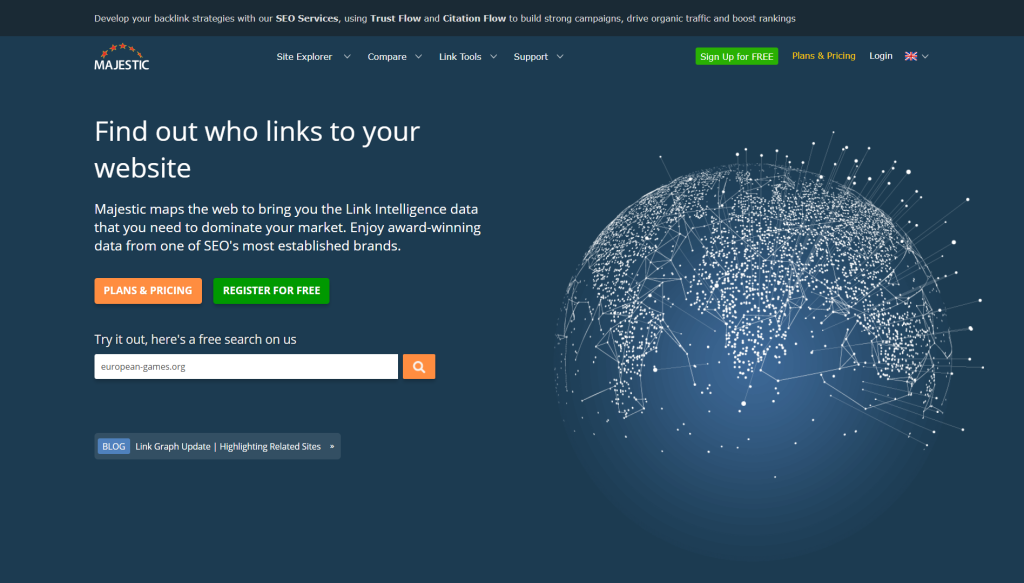
For example: is currently one of the best online link analysis tools available today, enabling you to identify all backlinks from any competitor site in seconds. As showed in an article by Backlinko, Brian Dean found it useful for identifying high-authority pages he wants to replicate links from:
“Identify High-Quality Link Targets: Find pages on your site that already have lots of links pointing at them. That way, you’ll work off of existing authority to boost your rankings for key phrases that matter to you. Pro tip: Use Ahrefs to find these pages”.
Identifying high-authority pages can be challenging at first since you might not know precisely where to look; however, once you establish a basic understanding of how it should be done with this kind of tools, you will improve your search engine ranking and ultimately generate more organic traffic in due course.
Common Questions and Answers
Can internal linking alone improve a website’s ranking on search engines?
Internal linking alone cannot guarantee a top ranking on search engines. However, utilizing internal linking strategically can boost your SEO performance. A study by Moz found that websites with strong internal link structure rank higher in search engine results pages (SERPs) compared to those with weak internal linking.
By incorporating relevant anchor texts and linking to pages within the same website, you can effectively distribute page authority and increase the number of pages on your website that appear on SERPs. According to a study by HubSpot, businesses with 401-1000 indexed pages get six times more leads than those with only 51-100 indexed pages.
In conclusion, while internal linking isn’t the only factor contributing to improved SEO performance, utilizing it correctly can significantly improve your website’s chances of ranking higher on SERPs and driving more organic traffic to your site.
How does the placement of internal links within a webpage affect SEO?
The placement of internal links within a webpage is of utmost importance when it comes to boosting your SEO performance. Search engines like Google use complex algorithms to crawl and index web pages, and internal linking plays a crucial role in how these algorithms perceive and rank your content.
Firstly, strategically placing internal links within the body of your content helps search engines understand the hierarchy of information on your website. By linking related topics, search engine bots can crawl and index your site faster and more efficiently, which can lead to better rankings on SERPs.
Additionally, the placement of internal links affects user experience by making it easier for visitors to navigate your site and find relevant information. This leads to lower bounce rates, longer on-site time and ultimately a positive impact on SEO metrics.
Don’t just take my word for it: studies have shown that websites with strong internal linking structures perform better on search engines. According to Moz’s State of Link Building Survey conducted in 2021, internal linking is considered one of the most important factors for improving a website’s search engine ranking (Moz).
In conclusion, the placement of internal links within a webpage can significantly affect its SEO performance by enhancing both search engine crawlers’ understanding of content hierarchies and user experience. It’s time to start taking internal linking seriously if you want to boost your website’s ranking on SERPs.
Are there any guidelines or best practices for effective internal linking?
Absolutely! As with any SEO strategy, there are guidelines and best practices that you should follow to ensure your internal linking efforts are effective and efficient.
Firstly, ensure that you’re using descriptive anchor text for your internal links. This helps both search engines and users understand what the page you’re linking to is about. According to a study by Moz, pages with descriptive anchor text had a 26% higher keyword rank than those without.
Secondly, avoid excessive or irrelevant internal linking. Overdoing it can lead to confusion for both search engines and users, as well as a potential penalty from Google. Aim for supporting only relevant content with your links to promote usability and user satisfaction.
Lastly, make a habit of regularly auditing your internal links in order to keep them up-to-date and relevant. This’ll help you identify any broken or outdated links that could be hurting your SEO performance.
By following these best practices, you’ll be sure to see an improvement in your SEO performance through effective internal linking tactics.
How many internal links should a webpage have for effective SEO?
When it comes to internal linking, there is no specific number of links that can guarantee effective SEO. However, studies have shown that having a high number of internal links on a webpage can lead to better search engine rankings.
According to research conducted by Moz, webpages with higher numbers of internal links tend to rank higher in Google search results. In fact, pages within the top three search results had significantly more internal links than pages further down the list.
That being said, it’s important to note that simply having a high number of internal links isn’t enough. The quality and relevance of those links also play a significant role in boosting SEO performance.
In general, aim for a ratio of 2-3 internal links per 500 words of content. It’s important to prioritize linking relevant pages and anchor text rather than stuffing a page with irrelevant or low-quality links.
In conclusion, while there is no magic number for internal links on a webpage, it’s clear that having a higher number of quality, relevant internal links can greatly improve SEO performance.
Besides making sure your internal links are on-point, it’s also crucial that your content are search engine optimized. On-Page.ai can automatically generate SEO-friendly content for your business or niche. Sign up today and let’s get you ahead of your competitors!




